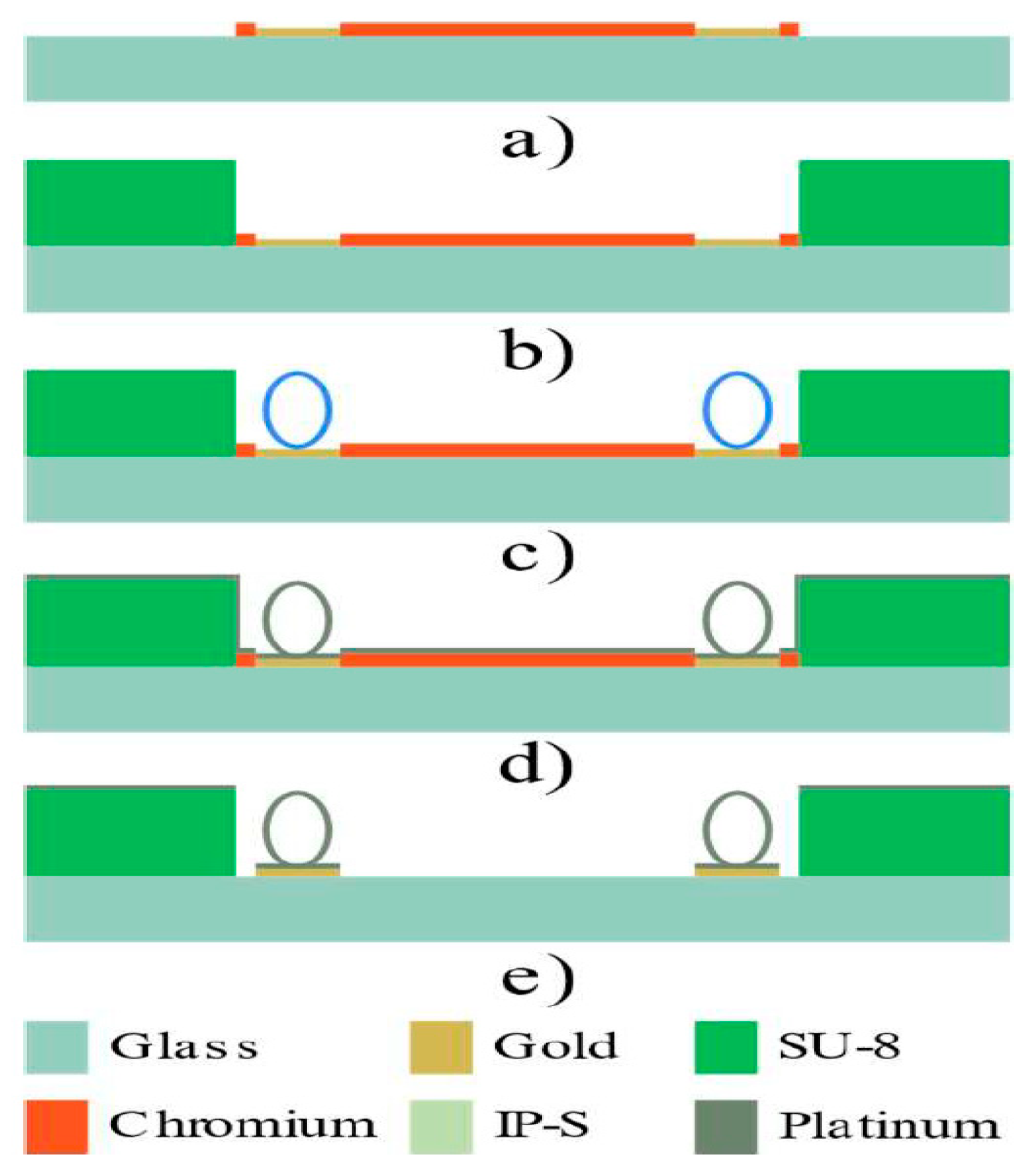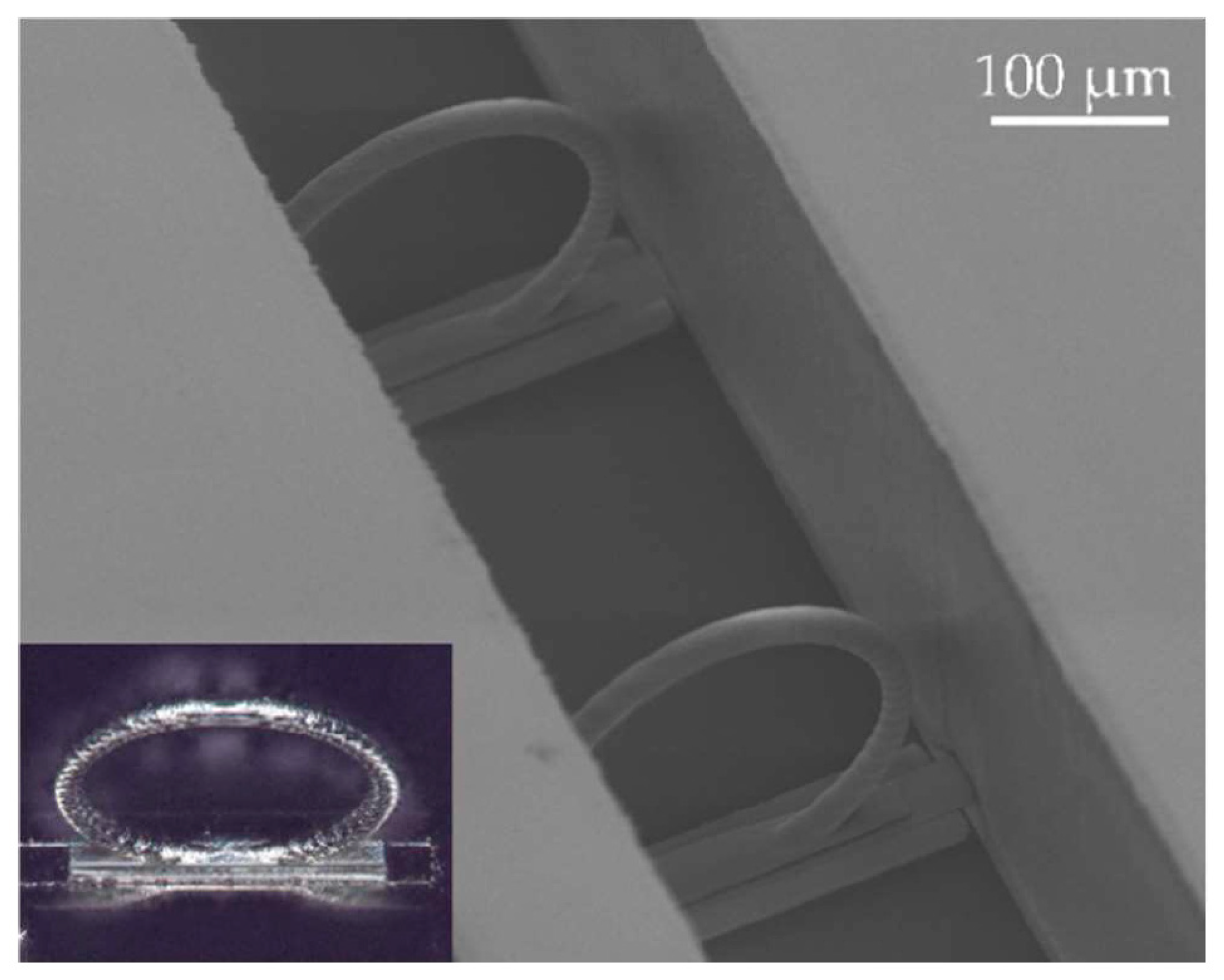A Process to Realize 2PP-Based Electrodes in Microfluidic Channels †
Abstract
:1. Introduction
2. Materials and Methods
3. Discussion
Author Contributions
Funding
Institutional Review Board Statement
Informed Consent Statement
Data Availability Statement
Conflicts of Interest
References
- Aksit, A.; Rastogi, S.; Nadal, M.L.; Parker, A.M.; Lalwani, A.K.; West, A.C.; Kysar, J.W. Drug delivery device for the inner ear: Ultra-sharp fully metallic microneedles. Drug Deliv. Transl. Res. 2021, 11, 214–226. [Google Scholar] [CrossRef]
- Juarez, T.; Schroer, A.; Schwaiger, R.; Hodge, A.M. Evaluating sputter deposited metal coatings on 3D printed polymer micro-truss structures. Mater. Des. 2018, 140, 442–450. [Google Scholar] [CrossRef]
- Reede, S.; Bunge, F.; Oellers, M.; Vellekoop, M.J. A Process to Realize Direct Laser Written Electrostatic Actuator Elements in a Closed Microcavity. In Proceedings of the 2019 20th International Conference on Solid-State Sensors, Actuators and Microsystems & Eurosensors XXXIII (TRANSDUCERS & EUROSENSORS XXXIII), Berlin, Germany, 23–27 June 2019; pp. 106–109. [Google Scholar]


Disclaimer/Publisher’s Note: The statements, opinions and data contained in all publications are solely those of the individual author(s) and contributor(s) and not of MDPI and/or the editor(s). MDPI and/or the editor(s) disclaim responsibility for any injury to people or property resulting from any ideas, methods, instructions or products referred to in the content. |
© 2024 by the authors. Licensee MDPI, Basel, Switzerland. This article is an open access article distributed under the terms and conditions of the Creative Commons Attribution (CC BY) license (https://creativecommons.org/licenses/by/4.0/).
Share and Cite
Gehlken, W.; Kirsch, M.; Vellekoop, M.J. A Process to Realize 2PP-Based Electrodes in Microfluidic Channels. Proceedings 2024, 97, 12. https://doi.org/10.3390/proceedings2024097012
Gehlken W, Kirsch M, Vellekoop MJ. A Process to Realize 2PP-Based Electrodes in Microfluidic Channels. Proceedings. 2024; 97(1):12. https://doi.org/10.3390/proceedings2024097012
Chicago/Turabian StyleGehlken, Wiebke, Melanie Kirsch, and Michael J. Vellekoop. 2024. "A Process to Realize 2PP-Based Electrodes in Microfluidic Channels" Proceedings 97, no. 1: 12. https://doi.org/10.3390/proceedings2024097012




